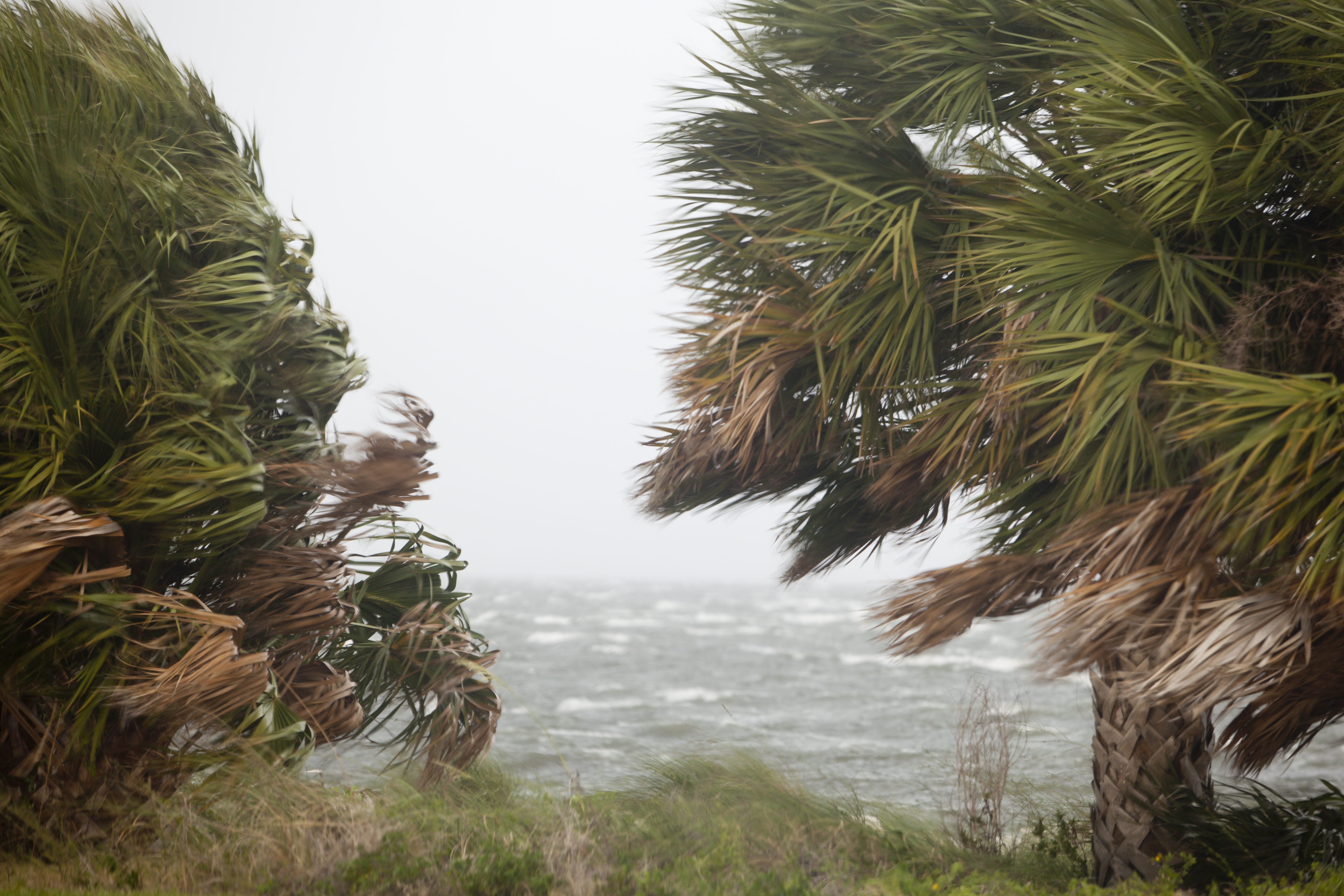
Prepare an emergency drinking water supply for your household before a storm hits. Image: Tyler Jones, UF/IFAS.
Storm season is upon us. During a natural disaster, normal drinking water supplies can quickly become contaminated. To be prepared, collect and store a safe drinking water supply for your household before a storm arrives.
How much water should be stored?
- Store enough clean water for everyone in the household to use 1 to 1.5 gallons per day for drinking and personal hygiene (small amounts for things like brushing teeth). Increase this amount if there are children, sick people, and/or nursing mothers in the home. If you have pets, store a quart to a gallon per pet per day, depending on its size.
- Store a minimum 3-day supply of drinking water. If you have the space for it, consider storing up to a two-week supply.
- For example, a four-person household requiring 1.5 gallons per person per day for 3 days would need to store 18 gallons: 4 people × 1.5 gallons per person × 3 days = 18 gallons. Don’t forget to include additional water for pets!
What containers can be used to store drinking water?
Store drinking water in thoroughly washed food-grade safe containers, which include food-grade plastic, glass containers, and enamel-lined metal containers, all with tight-fitting lids. These materials will not transfer harmful chemicals into the water or food they contain.
More specific examples include containers previously used to store beverages, like 2-liter soft drink bottles, juice bottles or containers made specifically to hold drinking water. Avoid plastic milk jugs if possible because they are difficult to clean. If you are going to purchase a container to store water, make sure it is labeled food-grade or food-safe.
As an extra safety measure, sanitize containers with a solution of 1 teaspoon of non-scented household bleach per quart of water (4 teaspoons per gallon of water). Use bleach that contains 5%–9% sodium hypochlorite. Add the solution to the container, close tightly and shake well, making sure that the bleach solution touches all the internal surfaces. Let the container sit for 30 seconds and pour the solution out. You can let the container air dry before use or rinse it thoroughly with clean water.
Best practices when storing drinking water
- Store water away from direct sunlight, in a cool dark place if possible. Heat and light can slowly damage plastic containers and can eventually lead to leaks.
- Make sure caps or lids are tightly secured.
- Store smaller containers in a freezer. You can use them to help keep food cool in the refrigerator if the power goes out during a storm.
- Keep water containers away from toxic substances (such as gasoline, kerosene, or pesticides). Vapors from these substances can penetrate plastic.
- When possible, use water from opened containers in one or two days if they can’t be refrigerated.
- Although properly stored public-supply water should have an indefinite shelf life, replace every 6-12 months for best taste.
More information on preparing an emergency drinking water supply can be found on the CDC website and in the EDIS Publication ‘Preparing and Storing an Emergency Safe Drinking Water Supply‘
- What to Do if a Sinkhole Opens on Your Property? - June 6, 2025
- Workshop on Private Well and Septic System Basics - October 18, 2024
- Septic system maintenance after a flood - June 7, 2024
